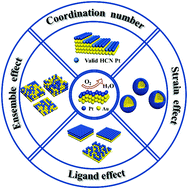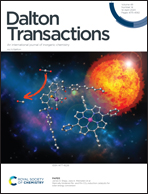Bimetallic PtAu electrocatalysts for the oxygen reduction reaction: challenges and opportunities
Abstract
Highly active, durable oxygen reduction reaction (ORR) electrocatalysts have an essential role in promoting the continuous operation of advanced energy technologies such as fuel cells and metal–air batteries. Considering the scarce reserve of Pt and its unsatisfactory overall performance, there is an urgent demand for the development of new generation ORR electrocatalysts that are substantially better than the state-of-the-art supported Pt-based nanocatalysts, such as Pt/C. Among various nanostructures, bimetallic PtAu represents one unique alloy system where highly contradictory performance has been reported. While it is generally accepted that Au may contribute to stabilizing Pt, its role in modulating the intrinsic activity of Pt remains unclear. This perspective will discuss critical structural issues that affect the intrinsic ORR activities of bimetallic PtAu, with an eye on elucidating the origin of seemingly inconsistent experimental results from the literature. As a relatively new class of electrodes, we will also highlight the performance of dealloyed nanoporous gold (NPG) based electrocatalysts, which allow a unique combination of structural properties highly desired for this important reaction. Finally, we will put forward the challenges and opportunities for the incorporation of these advanced electrocatalysts into membrane electrode assemblies (MEA) for actual fuel cells.

- This article is part of the themed collection: 2020 Frontier and Perspective articles


 Please wait while we load your content...
Please wait while we load your content...